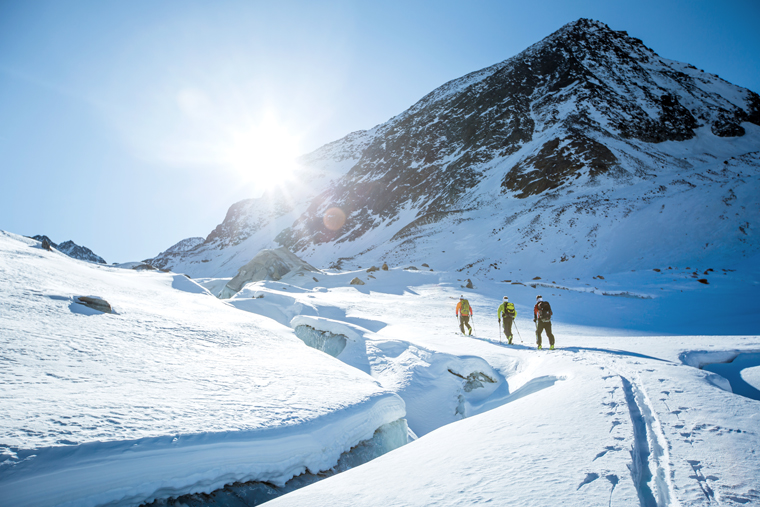How to plan a backcountry adventure: Picking your destination and guide


In part 1 of How to plan a backcountry adventure we worked out how to distill the cloud of possibilities down to the ideal ingredients for a team trip. Cloud is a good word – as we’ll have usually spent time in a blurry internet search that has left us with a nebulous mass of hazy possibilities, somewhat lacking in clarity and direction. So, how do we whittle down the options?
We know when we want to go, so where is good at that time of year? This is the classic approach of those limited to school holidays or, even better, those who are able to go at any time but the school holidays to get the better deals.
Often, my clients know when they want to go, and it is up to me to find a venue that delivers the essential ingredients. Early season? We’re going powder hunting on a grassy base, with a snow-line well down to the valley floor. So while the winter storms and Baltic temperatures ravage the lofty peaks, we can be cruising the soft delights of valley fresh.
Want to go in the early spring? Then we need to go high for the powder, or change aspect for the delights of spring snow. The later the trip, the higher we can afford to go as the steeps and glaciers come into fantastic condition. Want to stretch the season? Let’s head north of the Arctic circle. You get the drift.
Whatever the time of year, you’ll be able to identify a band of resorts that are at their best at your chosen time.
If you read the first article, and you and your mates have your sights set on specific ingredients, you need to get online and find out where and when to find the goods. By this stage, tackling all the issues means you’ll be focusing in on a couple of destinations that deliver the ingredients you’re after: high enough; facing the right way, and with epic terrain.
Wanna ski the Haute Route? Get online and see when the commercial trips go. Wanna ski anything but the Haute Route? Check out what other trips they offer with the same grade and criteria. For me, searching the web is like going back to that nebulous cloud of too many options. The best info comes from people’s accounts of their trips. This way you can find out if what they encountered is what you’re after.
My favourite inspiration of choice is the Eagle Ski Club Yearbook (an annual bumper write-up of loads of great venues) with maps as a source of detailed inspiration. We have a limited selection of English guide books, but get a bit of language under your belt and the Swiss, Italian and French books and maps can furnish you with a lifetime of venues.
Finally, if it’s down to a few options, go for the place with the most options. The best laid plans often go awry, so when you find yourself in a howling hooly and can’t see a thing, you’ll be glad you came to the place with some tree skiing down the valley – just in case!
First, you need to decide if taking a guide is worth it. There is something super satisfying about doing it all yourself. But for a lot of folks, taking a guide means taking someone they trust – not only to look after safety, route-finding (and to carry the rope), but to take care of ensuring you do something cool every day of the week, whatever the conditions. I reckon there is an acid test.
Close your eyes and imagine waking up in the most remote corner of your planned trip. The wind is howling, the snow is lapping down, and the visibility is shocking. If you are excited about questing out there and strapping it on – then crack on. If you would rather tuck in behind someone who knows where to go and what to do, then get a guide!
There are two main ways to find someone with the skills you need:
1. Head online and search for a guide in your destination of choice. Pros – you will get a local expert who knows the area better than most, and is well in-tune with the current conditions. Cons – that local might know the region, but doesn’t know you, and may take a while to suss you out and work out what you really need.
2. Get a favourite guide and take them with you. Pros – you have a guide who knows you well, knows exactly what floats your boat, and what you need from the trip. Cons – they will have to work a little harder to get up to speed with the local beta, and may make more cautious decisions as a consequence – but this is not necessarily
a bad thing!
Check out bmg.org.uk to find British IFMGA guides who live and work all over the world.